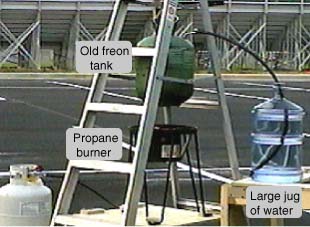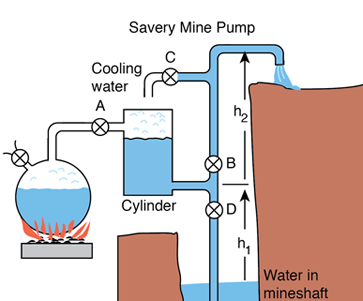Savery Engine
 |
This model of the 17th century Savery engine was built by physics teacher Dan Stamm of Campbell High School, Smyrna, GA. Invented by Thomas Savery in the late 17th century, the Savery engine was the first commercially successful steam engine. It was used to pump water out of mines. In this model, water is boiled in the metal tank to drive out air, and then when the tank is cooled, it pumps water from the large jug.
|
Atmospheric pressure demos
Pressure concepts
| HyperPhysics***** Mechanics ***** Fluids | R Nave |
